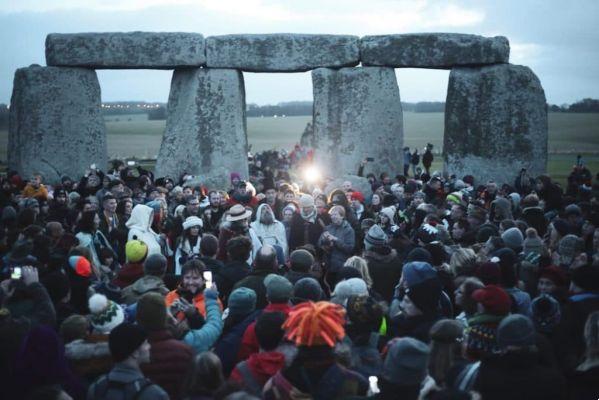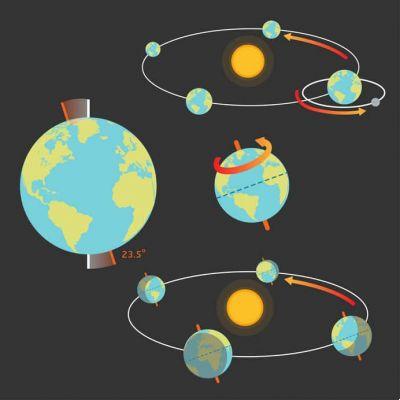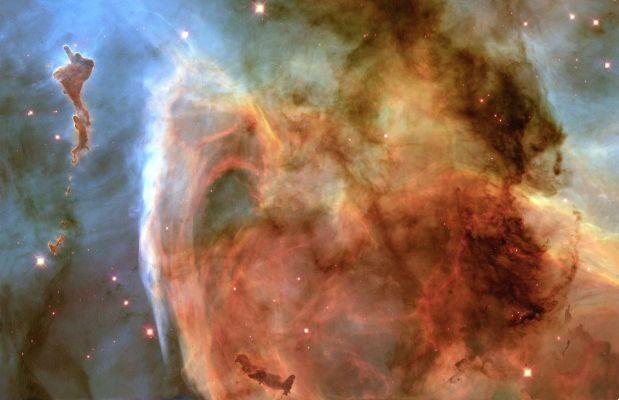Solstice and equinox are astronomical phenomena linked to the movements of the sun – the occurrence of solar rays in the Southern and Northern hemispheres – and which define the beginning of the seasons.
The solstice is a phenomenon characterized by the maximum incidence of the sun's rays on a specific hemisphere - called the summer solstice - and, consequently, by the minimum sun rays on the other - called the winter solstice. This phenomenon occurs only twice a year, marking these two seasons.

The equinox, which also occurs twice a year, marks the arrival of spring and autumn. Between the two solstices, the Earth reaches a point in its orbit where the sun's rays reflect at perpendicular angles on the Equator, so they are distributed equally between the two hemispheres, there the equinoxes occur.
Differences between solstice and equinox
The solstice is the phenomenon that represents the exact moment when the sun, in the course of its visible movement, declines in a greater way in latitude related to the Equator, causing one of the hemispheres to receive greater intensity of solar rays than the other. the other, thus beginning winter and summer.
You may also like
- Learn more about winter solstice meditation
- Discover the Celtic Spring Equinox
- Check out the mystical meaning of the summer solstice
The equinox is practically the opposite of the solstice, as the sun's rays fall entirely on the equator and none of the poles has a tilt related to the sun. This means that all the sun's rays are reflecting with the same intensity in the Southern Hemisphere and in the Northern Hemisphere, promoting days and nights with the same duration and initiating autumn and spring.
Understand when these phenomena occur
Winter Solstice and Summer Solstice

Represented by the time when the sun has a greater decline over the equator, the winter solstice occurs when the intensity of the sun's rays is greatest in a given hemisphere. In the Northern Hemisphere, the summer solstice begins between the 20th and 21st of June and the winter solstice between the 20th and 21st of December. In the Southern Hemisphere, the summer solstice begins around the 20th and 21st of December and the winter solstice between the 20th and 21st of June.
It is worth noting that, during the summer solstice, the days are much longer than the nights and, therefore, the nights are longer than the days at the winter solstice.
Autumn and Spring Equinox
The autumnal equinox occurs between the 22nd and 23rd of September and the spring equinox, between the 20th and 21st of March, in the Northern Hemisphere. In the Southern Hemisphere, the autumnal equinox begins around the 20th and 21st of March and the spring equinox between the 22nd and 23rd of September.
Now that you know the physical meaning of these phenomena, we have one more thing to tell you: these events are extremely conducive to certain areas of your spiritual life. Check out how each of these dates can influence your life:
Spiritual side of the solstices and equinoxes:
Winter Solstice
The winter solstice has many spiritual meanings that can influence human life. Some pagan religions believe that this moment has many energies of renewal, regeneration and self-reflection. This phenomenon has a great connection with the personal awakening of each one and can be used in a great way by people who need self-knowledge, so, at this time, stop, reflect and compose yourself!

In shamanism, many ceremonies are performed during the winter solstice. Several tribes present the shaman with valuable objects to make a request official. They claim that when this phenomenon comes to an end, everything that was covered up is revealed! In this belief, this season milestone is the perfect time to forgive mistakes and to free yourself from suffering, that is, it's a fresh start!
In paganism, this solstice became known as Yule, a celebration of the lunar energy held as goddess by such belief. Pagans believe that on the day the winter solstice occurs, the Moon gives up its own light to the sun, providing a time for further reflection.
If you don't have any beliefs, know that the winter solstice is a time to do a self-analysis, reflect on your life and also on what you've been doing in it. It's a good time to let go of all your hurts and give yourself a new chance.
Summer Solstice
Oh, the summer! At the summer solstice, nature is at its fullest! This is the time when all the creative side is at its most potent! This date is one of the most favorable times of the year to put some projects into practice and focus on your goals. It's time to expand and bear fruit!
In ancient civilizations, pagans jumped over bonfires as a ritual for purification, love, health and fertility. In the Northern Hemisphere, the Celts considered the day of the summer solstice to be one of the holiest days of the year, as they bowed to the sun as an important source of energy. On this date, people met in monuments made from large blocks of stone – megaliths of the earth – and worshiped the sunrise.
It's worth taking advantage of this phase to take a step forward! Bet on your projects and believe in your potential!
Autumn Equinox
This equinox, which marks the end of summer, has great symbolism: the hottest time of the year is behind us, along with extroversion and the period of greatest expansion. The autumnal equinox is a time that promotes greater favoring of personal recollection, as well as encouraging detachment. It's time to leave everything that no longer serves you and move on. If you stop to analyze the arrival of autumn, you will notice that the trees let their leaves fall to be prepared for the cold of winter, so this solstice invites us to let go of the old and gives us a bigger internal space so that new fruits can be born. .
Find your balance at this equinox! Look at your life and be a little more with yourself. For everything to be new, you need to cleanse yourself of what no longer fits you.
spring equinox
Considered one of the most beautiful periods for the spiritual plane, the spring equinox is a time that represents the balance of everything: light and shadow, feminine and masculine, moon and sun - it is also a period of energetic changes.

After staying a while more secluded because of the cold, the beginning of spring instigates movement, leaving the cocoon to see the sun that shines and the seeds that will soon germinate. All the desires and reflections that were part of your interior last season can be sown at this moment so that you will soon reap the fruits of your energetic balance.
Getting in touch with nature is a great differential to receive the good energies of everything that is new. Remember that it is important to keep internal reflections to always be good with yourself and be able to enjoy everything that the spring equinox can bring you!

























